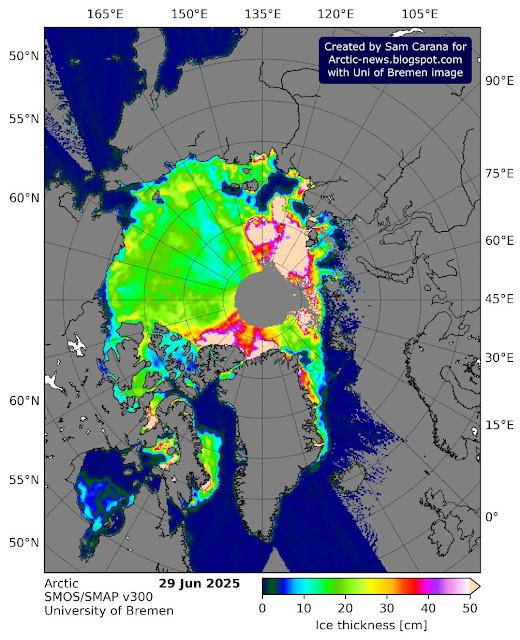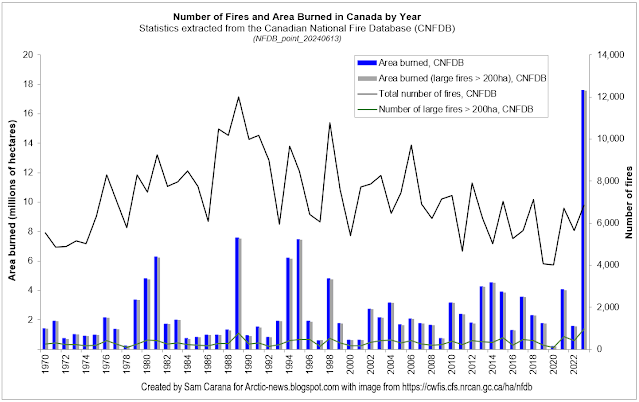Arctic sea ice extent was 8.35 million km² on July 4, 2025, a record low extent for this time of year. This record daily low extent is the more significant since it was reached in the absence of El Niño conditions. Instead, ENSO-neutral and borderline La Niña conditions are currently dominant.
Sea ice extent is but one of several indicators of the miserable state of the Arctic sea ice, as discussed in an earlier post. This raises the question: Will an Arctic Blue Ocean Event occur in 2025?
 |
| [ from earlier post ] |
- Very high temperatures, starting in 2023 and still persisting this year
- Very low Antarctic sea ice over the pasty few years
- Record high concentrations of greenhouse gases
- Heat rising from the Southern Ocean into the atmosphere, as discussed in an earlier post
- Record low Earth's albedo (as illustrated by the image below)
 |
| [ James Hansen: Inferred contributions to reduced Earth albedo ] |
There is a compound impact in that sea ice loss comes with albedo loss that causes more heat to be absorbed by oceans, while higher global sea surface temperatures also cause further loss of lower clouds, further reducing albedo and thus accelerating the temperature rise.
Polar amplification of the temperature rise narrows the temperature difference between the poles and the Equator, which causes distortion of the Jet Stream that in turn results in more extreme weather events. A 2025 study led by Tselioudis suggests that this causes the band of clouds over the Tropics to contract. Since clouds over the Tropics reflect relatively more sunlight, this results in reduced global albedo.
The extraordinary albedo loss depicted in the above image causes the temperature to rise, increasing the probability for a Blue Ocean Event to occur in the course of 2025.
Climate Emergency Declaration
The situation is dire and the precautionary principle calls for rapid, comprehensive and effective action to reduce the damage and to improve the situation, as described in this 2022 post, where needed in combination with a Climate Emergency Declaration, as discussed at this group.
Links
• National Institute of Polar Research Japan
https://ads.nipr.ac.jp
• Saltier water, less sea ice
• Transforming Society
https://arctic-news.blogspot.com/2022/10/transforming-society.html
• Climate Plan
https://arctic-news.blogspot.com/p/climateplan.html
• Climate Emergency Declaration
https://arctic-news.blogspot.com/p/climate-emergency-declaration.html














































